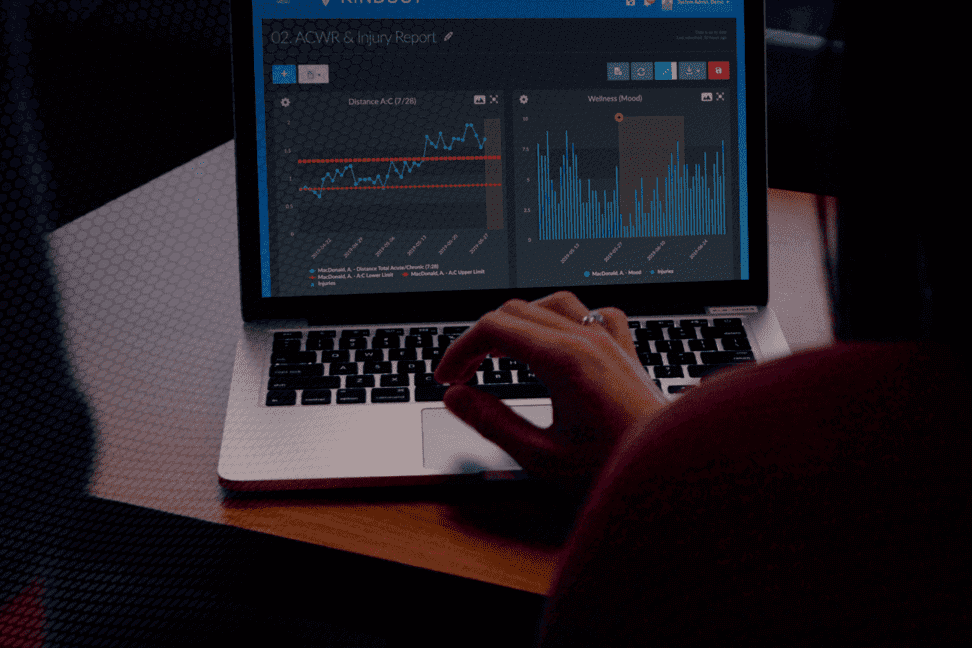
We’ve covered the benefits of our Human Performance Platform and EMR (Electronic Medical Records) in separate blog posts in the past. But here, we’ll fully uncover the big picture that is combining your EMR and medical data with what your performance team is collecting, and why you and your organization can find value from such a pairing.
ORGANIZATIONAL ENHANCEMENTS
To start, you may be asking who benefits from centralizing both injury-related and performance data. And in short, it can be said that everyone in your organization who works directly with the athlete does.
Historically speaking, when it comes to data and technology, the medical and performance sides of an organization have been siloed.
This can be traced back to the fact that performance data may be kept in spreadsheets in Excel, while traditional EMRs were not built for sports and tend to have a more complicated user experience tailored to the healthcare space.
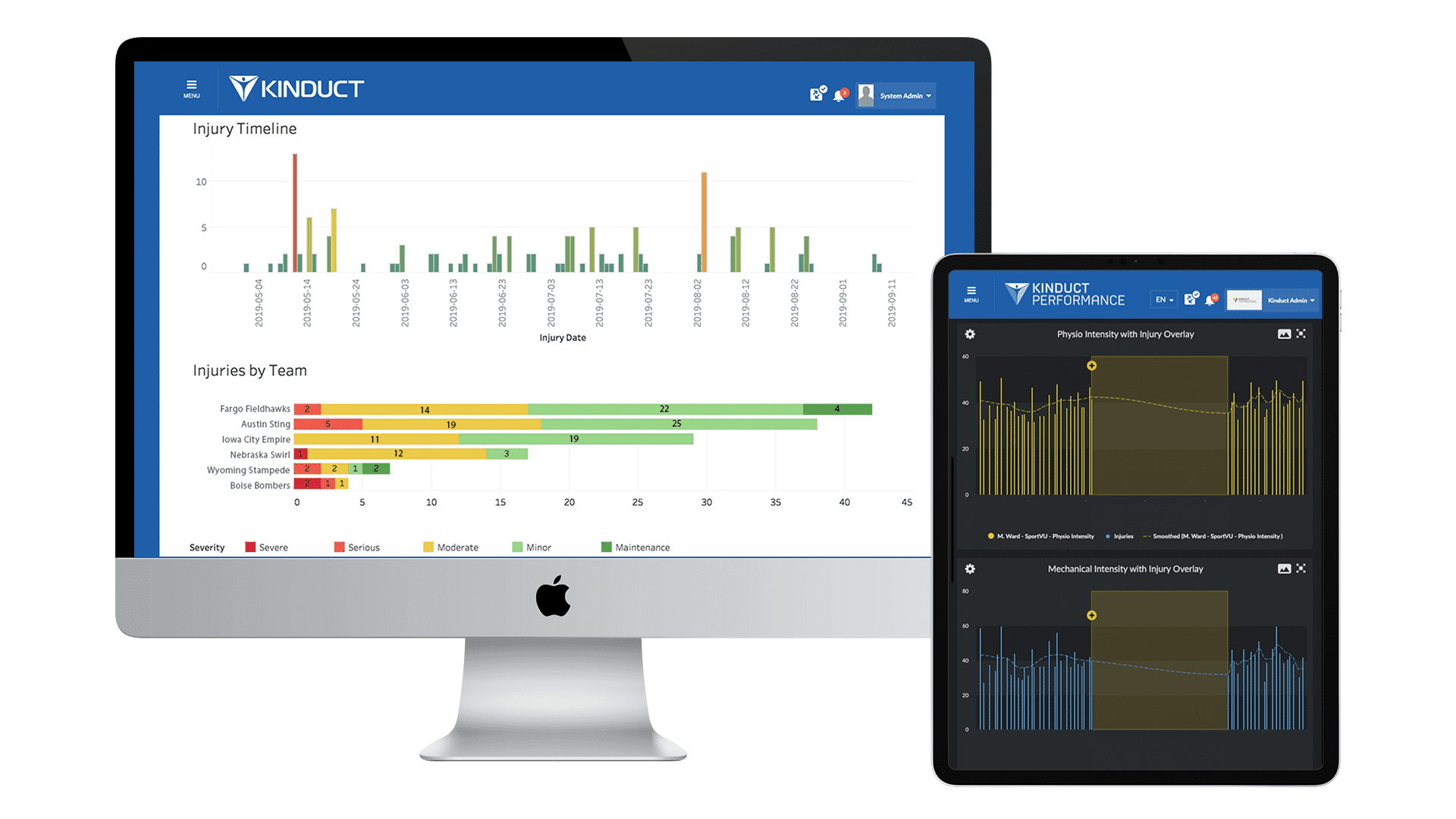
But a modern platform like Kinduct uses simple yet effective functionalities to marry the medical and performance workflows into a single, secure platform.
This means team doctors and therapists, as well as S&C coaches and performance analysts, have a home base where all the data that’s being collected can live.
Using a single system makes it easier for staff to stay on the same page. Additionally, it helps communicate each athlete’s status, avoids duplication of work, ensures data security, and can help inform the standardization of methods such as return-to-play protocols and custom year-end reporting.
Lastly, Kinduct is optimized to protect the athlete’s data. If only authorized members of the staff should have access to certain datasets, Kinduct allows for that through a system of roles and permissions which ensures applications and data are accessible to only those who are meant to see it.
OVERLAYING DATASETS
Our list of EMR capabilities and tools includes:
- Treatment Log for injured and/or recovering athletes.
- Injury Logs/Injury Charting (individual and team) present a simple yet detailed view of an athlete’s injury history, possible procedures, and games/practices lost; on a team-wide scale, these reports uncover trends impacting the entire organization.
- Availability Reports — a great communication piece to update coaches on the status of athletes and their potential limitations.
- Medical Forms are traditionally facilitated on paper, but Kinduct digitizes these assessments and assigns them through both the Kinduct Athlete App and the web platform.
- Rehab Programming can be built out using Kinduct’s content library of over 5000 exercise videos.
And all of these features and datasets are great on their own, but what’s better is combining them with what’s happening to the athlete on a performance and wellness level.
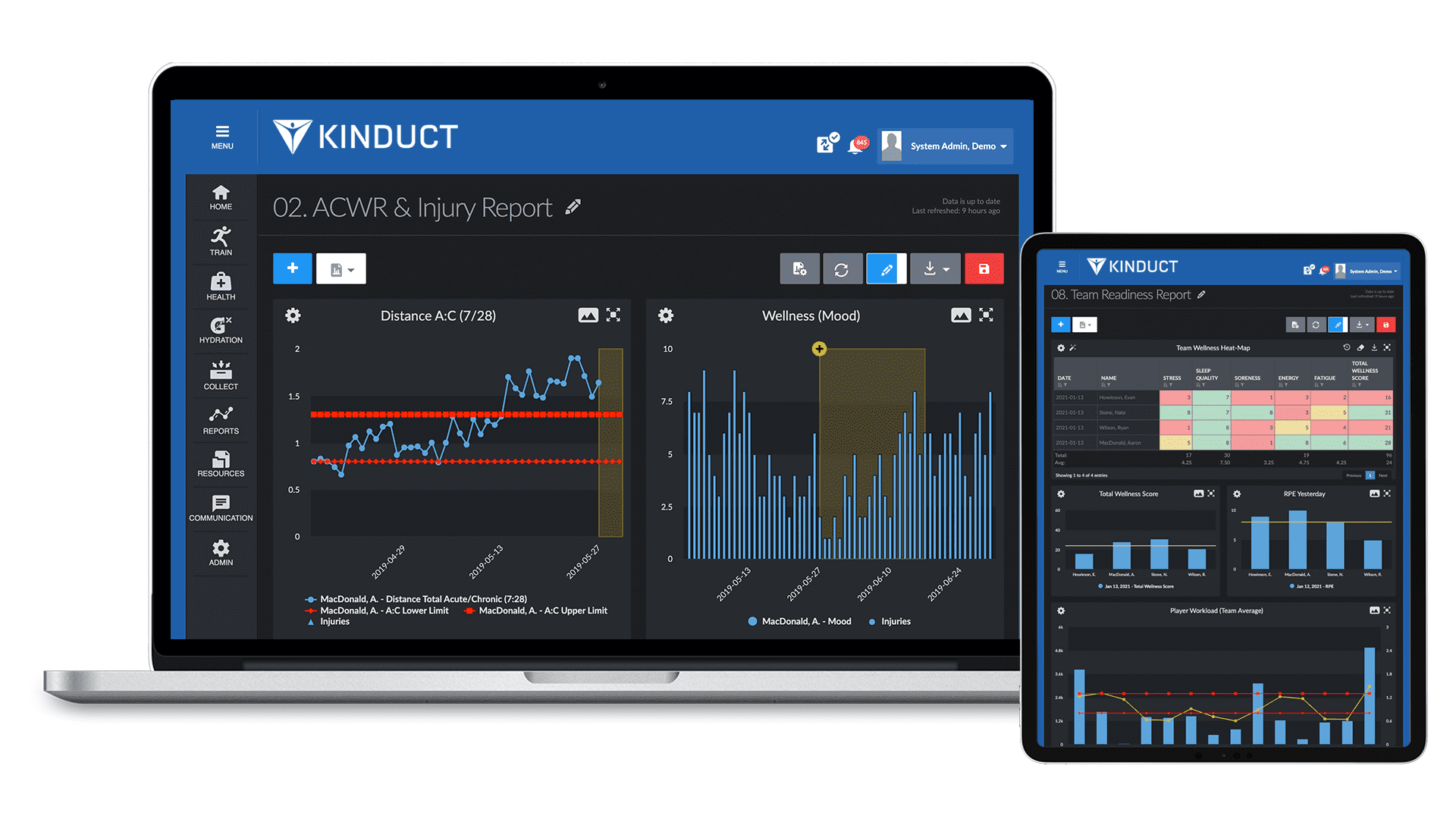
Overlaying datasets lets you dig deeper into the athlete’s condition at the time of incident; it not only shows what the injury is and when it occurred, but also what was happening during that time from a performance standpoint.
Did the athlete accumulate an abnormal training load leading up to the injury; was there unaccounted travel in their schedule that disrupted recovery; what exercises were or weren’t completed in their recently assigned training programs.
With Kinduct, users can explore these types of questions and unearth patterns such as type of injury, time in season, and other attributes of interest to help mitigate future risk.
Danielle McNalley, Head Athletic Therapist of Halifax Wanderers, said, “Kinduct lets us not only plan for the short term but the long term as well. If we’re seeing the same type of injury early in the season or mid-season, we can then plan for that rather than react.”
INFORMED ACTION
Users of Kinduct are true experts in their respective fields of strength training, therapy, and medicine. Our system not only allows them to aggregate and discern data, but also provides them with tools to inform action throughout the organization.
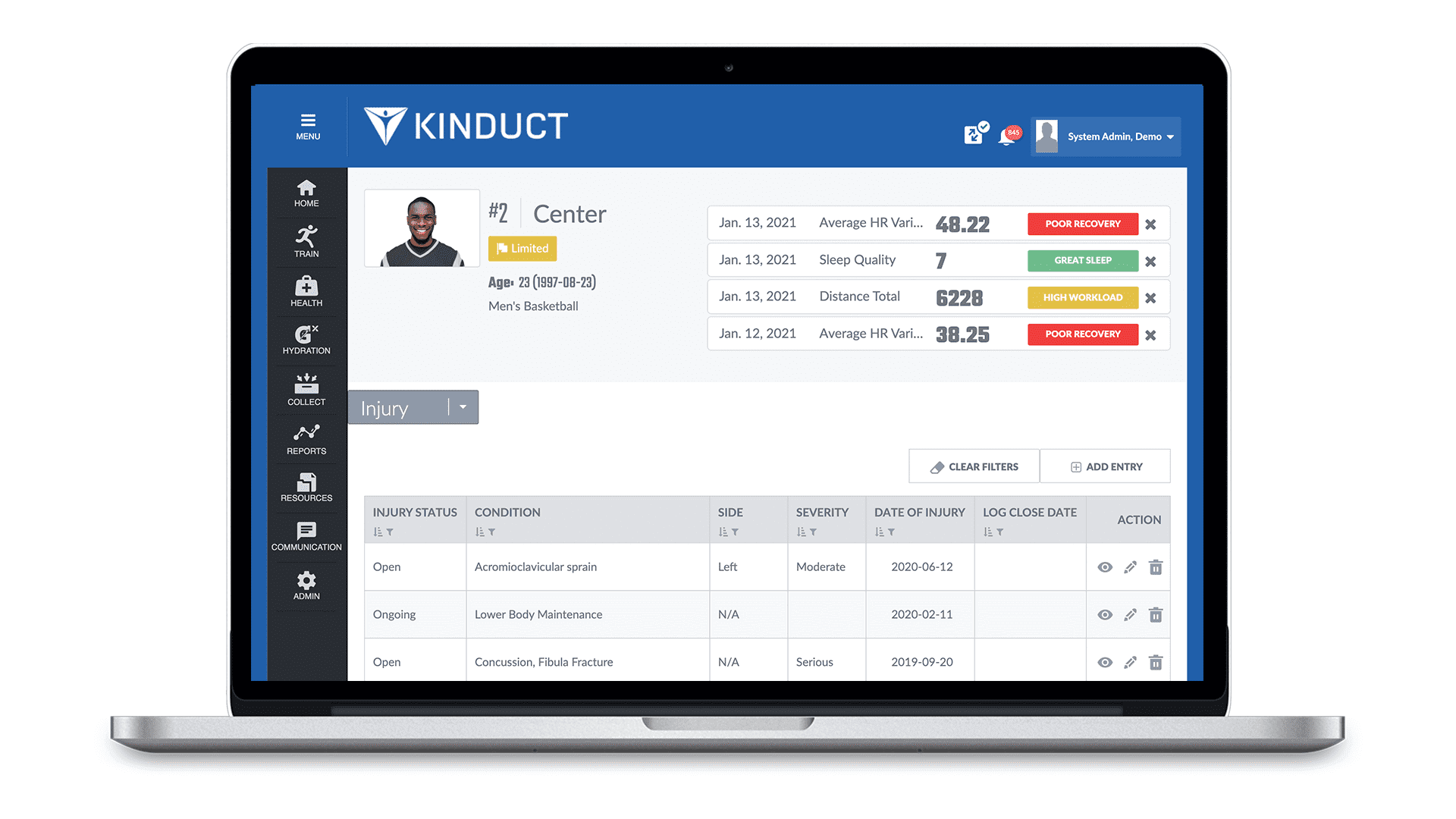
One example is return to play protocols.
Rehab programming can be built in Kinduct, which can then be assigned directly to the athlete’s mobile device if they are unable to rehab on premise.
Another example is custom year-end reporting. We’ve seen summaries presented to both athletes and coaches, as Mark Packwood of the OHL’s Windsor Spitfires explains.
For his athletes during the 2019-2020 season, he created injury logs that illustrated time missed based on practice or games “to show each player how robust they were during the season and also gave them a brief summary of any injuries they experienced or anything that seems repetitive over the year.
“When it came to exit meetings with my staff, Kinduct enabled me to summarize when our team was ‘tired,’ if this coincided with winning/losing streaks, and how we can better manage this in the future.
“This could be from a team perspective or from an individual player, and also in a both physical and cognitive manner. In general, [Kinduct] helps push against the norm of how hockey seasons and practice schedules have typically been formulated and suggest that maybe there is a better approach.”
As a data consolidator, Kinduct keeps each of the athlete’s stakeholders up to speed during their rehab, using the tools we mentioned above like Treatment Log and Injury Charting (as well as general wellness assessments) to monitor and analyze their physical progression as they return to play.
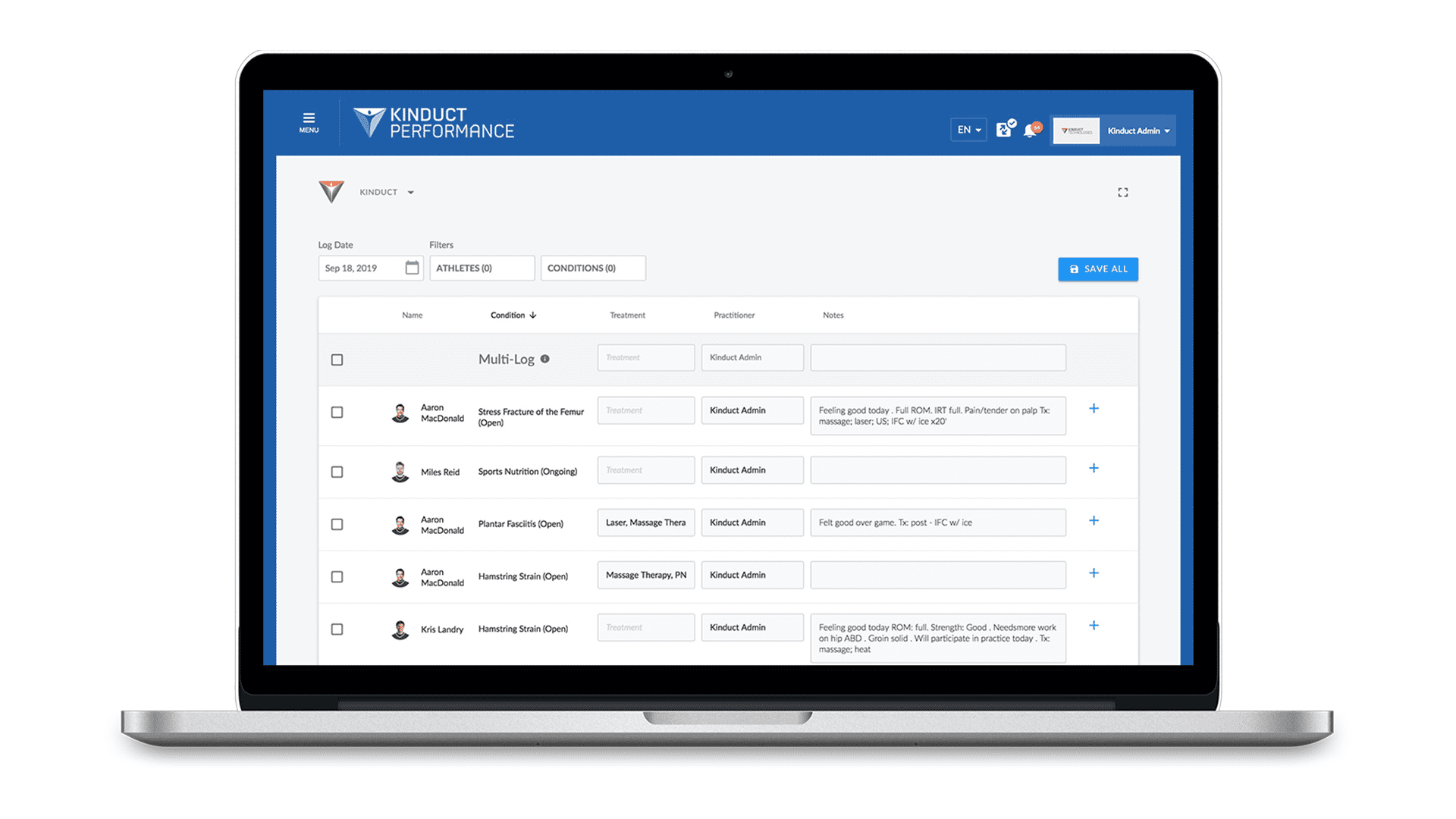
IN CLOSING
Centralizing performance and injury-related data into a single system doesn’t solve every problem an organization has. Technology still presents an endless stream of data, which can be overwhelming or frustrating. There are still hiccups and unpredictable events in the road of a season.
But what a system like Kinduct does is lend itself to the centralizing and sifting process, which helps organizations maximize their time, keep athletes in the field of play, and puts everyone in a better position to succeed.